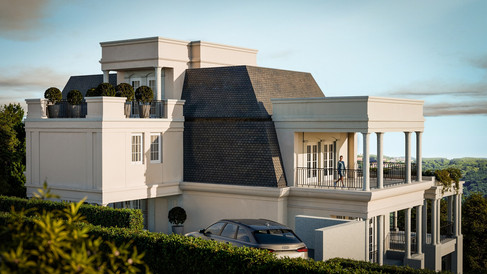How 3D Visualization Helps Architects and Investors Make Better Decisions
- Studio Yian

- May 14
- 2 min read
In today’s fast-paced and competitive world of architecture and real estate, decision-making no longer relies solely on drawings and technical documentation. Visual communication has become a vital tool. Through 3D architectural visualization, design ideas become tangible, engaging—and most importantly—persuasive.
Visualization is not just a tool for final presentations. Increasingly, it’s a strategic part of the design development process itself. Below, we explore how architects and investors are using 3D tools to make smarter, faster decisions throughout a project’s lifecycle.
1. Visualization as a design tool—not just for the final reveal
Many associate 3D visualization with the “pretty images” at the end of a project, once everything is already decided. But real-world practice shows that renderings can be a powerful tool during the design phase.
More and more, visuals are created early on to assist with material selection, massing, lighting, and ambiance. Architects use them to explore options and communicate more clearly with investors and collaborators. Early-stage visualization helps prevent costly late-stage changes and confirms design directions before they’re set in stone.
2. For architects: clearer communication and faster decision-making
Architects are constantly communicating complex ideas to people who may not be from a technical background—whether that’s clients, investors, developers, or public authorities.
3D visualization enables:
• A clearer understanding of the design without needing to interpret drawings
• Faster approvals, as clients can “see” the concept in real terms
• Visual testing of multiple options without extensive CAD work
• Fewer misunderstandings and misinterpretations
Visualization bridges the gap between concept and comprehension, helping everyone involved make confident choices more quickly.
3. For investors and developers: stronger branding and faster marketing
For investors and developers, visualization isn’t just a sales tool—it’s a branding tool.
• High-quality visuals create a strong first impression of the architect or developer
• They reflect brand values—luxury, innovation, sustainability, etc.—through style and tone
• Visual consistency across projects builds brand recognition
• Renderings become part of a company’s visual identity
A render doesn’t just showcase a space—it communicates the philosophy of those behind it. This makes visualization a vital part of brand building, not just design presentation.

4. Real-world example: when renders shape real architecture
One of our clients commissioned a set of visualizations before construction began. During the process, the design underwent several key changes.
After seeing how a specific wall material looked in the rendered context, the team decided to swap it out for a different finish. Months later, the same visuals were used to reevaluate and revise the terrace and roof design—resulting in concrete changes before execution.
This case illustrates how visualization directly influenced the final outcome, helping both architect and client make more informed decisions throughout the project.
5. Visualization as a decision-making tool, not just aesthetics
Quality 3D visualization is no longer a luxury—it’s a necessary tool in today’s design and development workflows. It enables stakeholders to fully engage in the process and make faster, more confident decisions.
If you’re looking for a visualization partner who understands the design process and can translate your ideas into compelling visual language, we’d love to hear from you






Comments